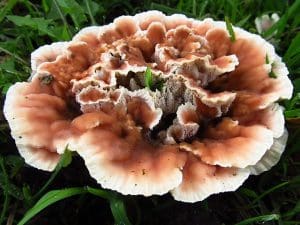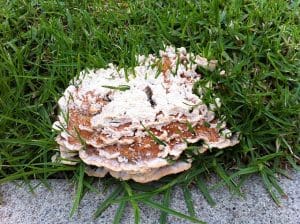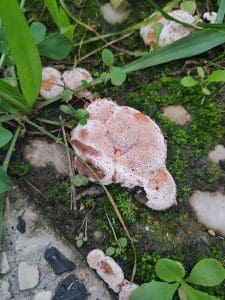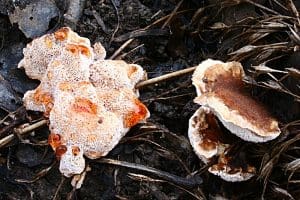Blushing Rosette / Summer /Autumn / Inedible
The Blushing Rosette (Abortiporus biennis) is an intriguing and uncommon mushroom species found in various habitats across the UK, Europe and North America.
Recognisable by its distinct rosette-like appearance and tendency to blush pink when bruised, this fungi often grows on decaying wood or tree roots, although it can occasionally be found in soil.
Despite its appealing name and appearance, the Blushing Rosette is not commonly consumed due to its tough, corky texture.
This article will explore the identifying characteristics of the Blushing Rosette, its ecological role, and any potential risks associated with handling or encountering this fascinating species in the wild.
Scientific Name
Abortiporus biennis
Common Names
Blushing Rosette
Family
Meruliaceae
Habitat
They are saprobic, and are generally found growing in grass or soil from the dead roots of broad-leaf trees, occasionally they appear on woodchip mulch.
Description
An occasional find whose appearance can vary a lot and two distinct forms of this fungi can be found. The “normal” looking form, is a regular looking polypore and an “aborted” form also appears, that looks like a messy, irregular mass of pores, The description below is for the regular form.
Identifying Features:
Cap:
The caps are generally 5–20 cm across, nearly flat and round to rosette shaped. Very often nearby fruiting bodies fuse together. The upper surface is white to off-white when young, then pink to reddish brown. The margins or edges are thin and paler than the rest of the upper surface, bruising reddish brown when handled or damaged. When young they can exude a pinkish to orange liquid.
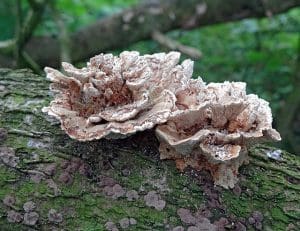
Stem:
The stems are 4–7 cm long and around 2–3 cm thick, tapering towards the base.
Pores:
When young the pores are off white, bruising and discolouring reddish or pinkish brown. They are irregular and maze-like.
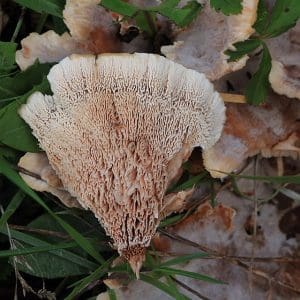
Smell:
No distinctive smell.
Spores:
White.
Known hazards
While not thought to be toxic they are inedible.
Potential lookalikes:
They are quite distinctive but the regular form could possibly be confused with the rarer Zoned Rosette (Podoscypha multizonata), but the Zoned Rosette doesn’t have visible pores.
When they are young and ‘leaking’ red droplets they look a little like Devil’s Tooth (Hydnellum peckii) but this has spines rather than pores.
Possibly confused with the turkey tails mushroom which is quite a common find, the main difference amongst others is that the turkey tails doesn’t blush.
Extra Notes
These mushrooms often suffer from what’s called ‘rosecomb mutations’ This is when deformities such as distortions or lumps develop and often gills form on the top or there are abnormal growths of gills. We’re not sure why this happens, some say it’s due to environmental factors such as contaminants, or genetic mutations.
References:
https://www.first-nature.com/fungi/abortiporus-biennis.php
http://10000thingsofthepnw.com/2021/10/02/abortiporus-biennis-blushing-rosette/



